Are all replacement shore power plugs rated "For Dry Locations Only"?
I've been following this issue for years. Does anyone manufacturer a replacement 30 or 50-amp shore power plug that's rated for wet locations (at campgrounds!)?
Hello, Mike.
I have been enjoying your posts and have implemented several of your suggestions. Attached are photos of my shore power cord. It is a fairly new Camco. The trailer end looks normal. I assume that I need to replace this, although it seems to be working fine and my surge protector and polarity indicator are appear normal. Can I replace the plug? The replacement Camco plug says “for dry locations only”. Not sure how that could apply to a RV. What do you suggest? Thanks a lot - Allen K.
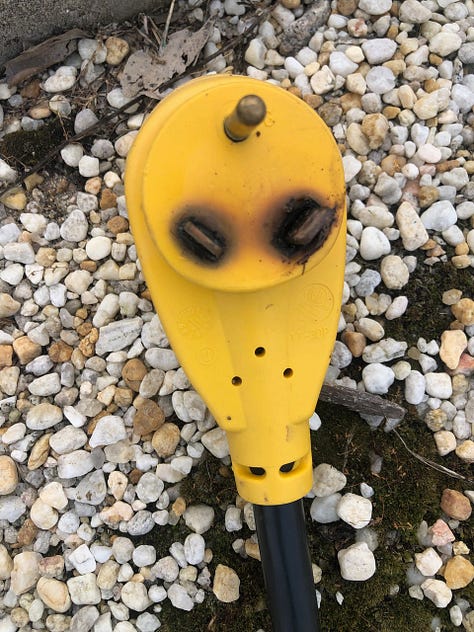
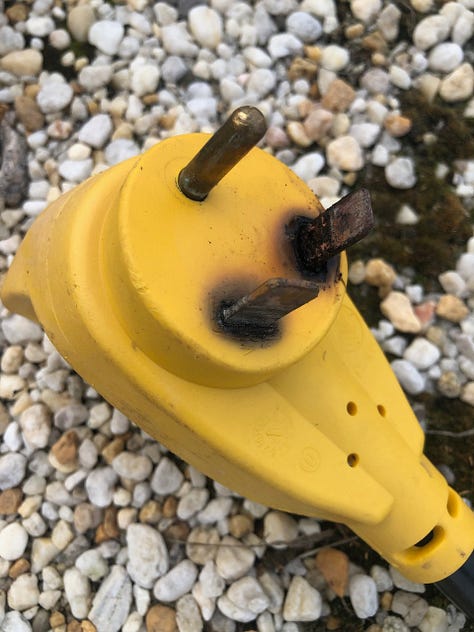
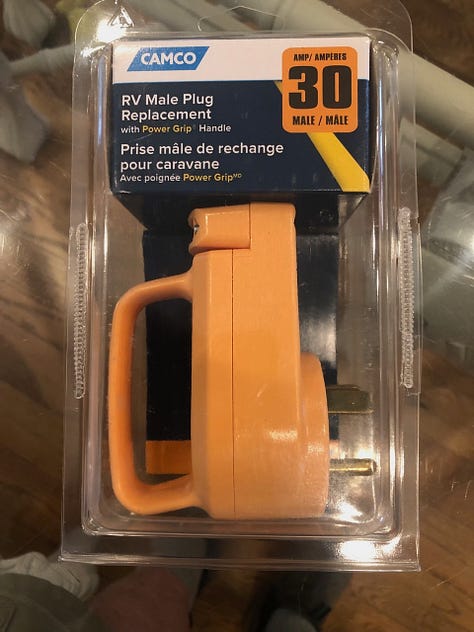
Here’s another reader who wants to repair the plug on his shore power cord
The 30-Amp power cord from my Class-C has the cord insulation pulling out of the socket head. I have always tried to disconnect the head from my EMS unit by pulling and wiggling on the head and not just pulling on the cord.
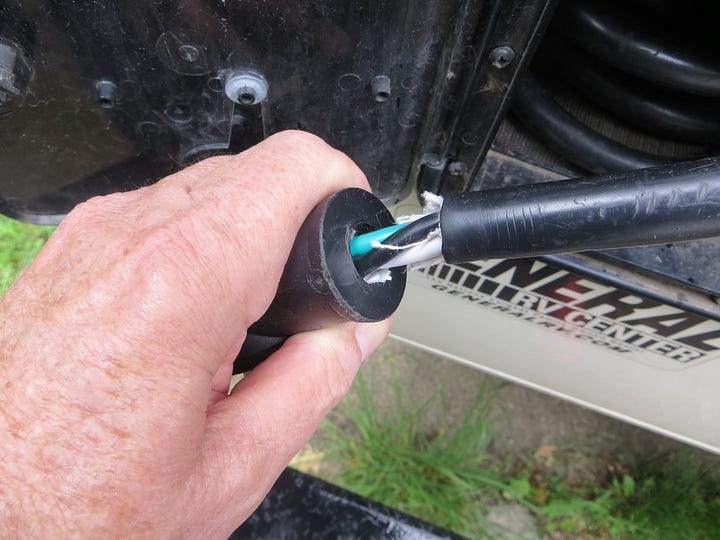
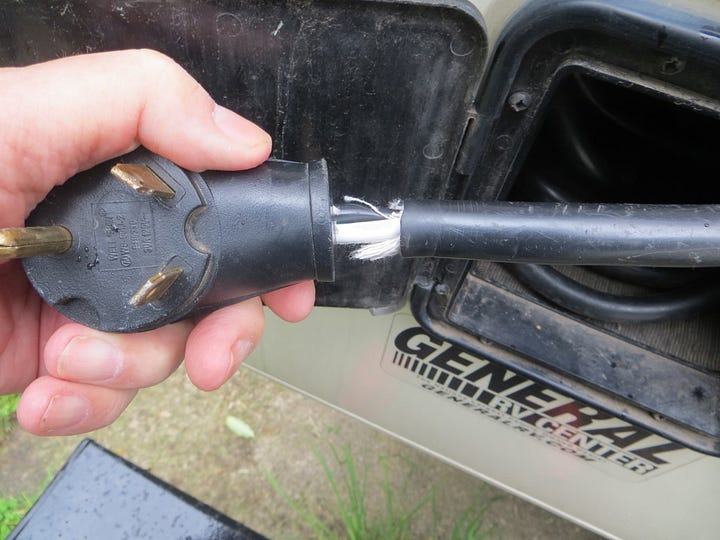
It appears that the wire "jacket" has simply shrunk and pulled back over the last 8 years. I could cut the molded head off the wire and attach an aftermarket head as I have the tools to do the job but am wondering if I could not simply use Black RTV to re-attach the head to the wire insulation and not mess with the electrical wire connection.- Roger M.
What do I know?
I did a casual search of the major shore power plug manufacturers and could not find a single one that’s rated for wet locations. I’ve sent a few inquiries and have already received one answer.
Short answer from a plug manufacturer
“The underlying issue is when you replace a plug, the unit is no longer sealed by the manufacturer. In order to replace, you need to split the replacement plug (usually screws) then attach the wires to the plug, then screw back together. This process is not weather tight, so dry conditions only.”
So can you replace a shore power plug safely?
I know there’s a lot of these replacement shore power plugs being sold and installed, so they must be safe. However, there may be extra precautions you can take if a replacement plug is exposed to weather conditions. So please stand by for more info.
Let’s play safe out there… Mike






When I replace a cord end I use a liberal application of liquid electrical tape. Around where the cord enters the plug, around the seam between the two halves, and the screw holes, and (carefully) where the contacts insert through the plug body. If you seal all possible openings it is somewhat wet capable. As a test I made a cord end with a scrap piece of cord. Coated it with liquid tape (note: it may take several coats, with dry time in between, to get a good seal) and dunked it in a bucket of water for 10 seconds. When I took it apart it was dry inside. This may not make it watertight but it should be good enough for exposure to rain. Plus the cord end is often shielded by the cover of the electrical box, giving additional protection.
Attack this issue differently. I carry a spare 30A plug, BUT I got one that has a pigtail. Would require splicing the cable, so shrink wrap is good to have, but doesn't say "dry location". See https://a.co/d/fKZnoUH on Amazon. Scott